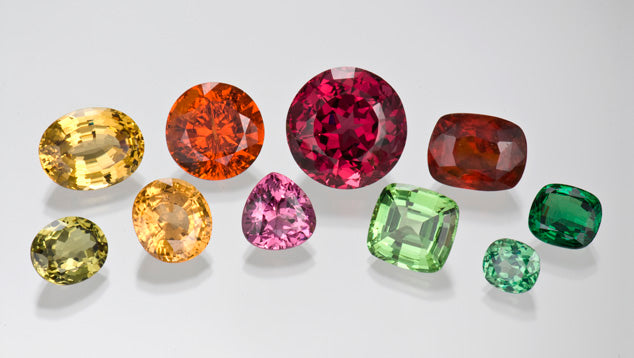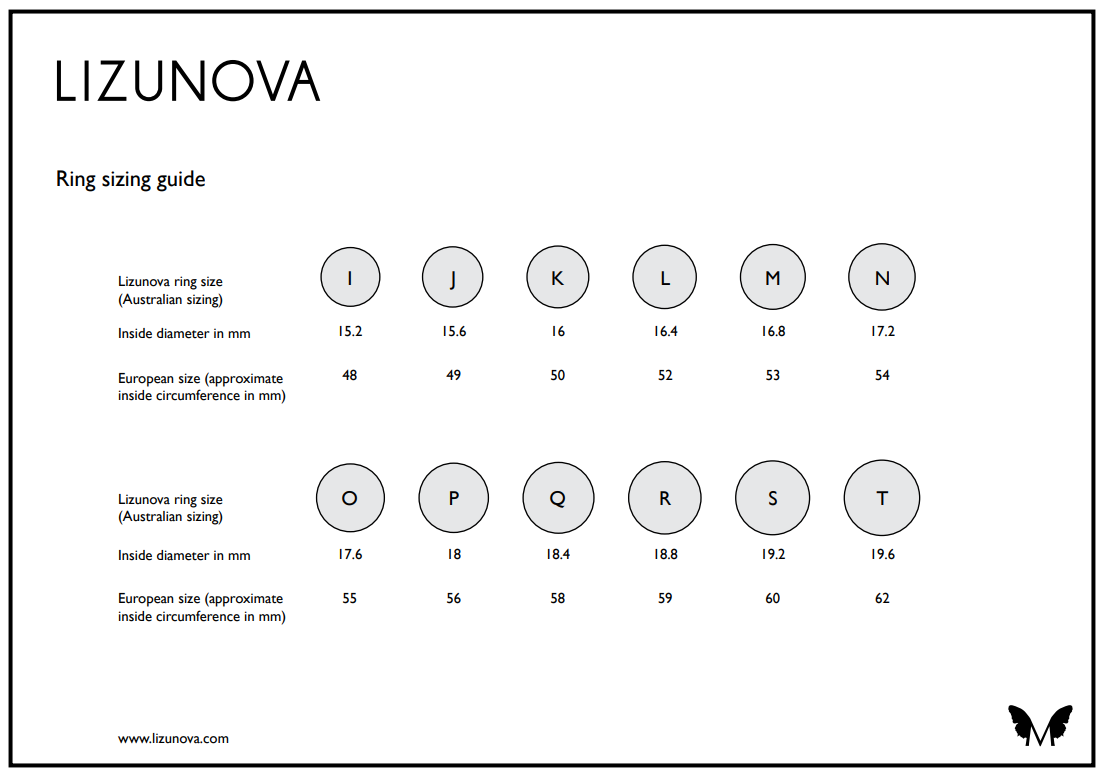Garnet colours
Most people have the misconception that garnets are rather unattractive dark reddish-brown stones and are basically a "poor man's ruby". This couldn't be further from the truth - garnets are a remarkable family of gemstones that come in every colour except for a true blue (some rare teal blues do exist). They also can display amazing phenomena such as asterism (e.g. the famous almandine star garnets from Idaho, USA); chatoyancy, producing a cat's eye effect, and colour-change from teal blue/greens in natural and fluorescent light and rich reddish purple in incandescent light striking gems which make a wonderful alternative to Alexandrite. They normally have a bright, vitreous lustre and take a good polish and have a bright, fiery appearance. Mali and Demantoid garnets have a sub-adamantine lustre and sparkle like diamonds.
Garnets in jewellery
Garnets have good hardness and range from 6.5 to 7.5 on the Mohs scale. They are hard enough to set into ring settings, however, should be worn with care.
Garnet varieties
There are six major varieties of gem garnets that are used in jewellery: Pyrope, Almandine, Spessartine, Grossular, Andradite and Uvarovite. Pyrope garnets are famous for their fiery red colour that flashes in the sun; Almandine garnets are the classic rich dark red stones that have been used in jewellery since antiquity; Spessartine garnets can be vivid orange and are known in the trade as Mandarin garnets; Grossular garnets range from nearly colourless to gold through to green the most prized Grossulars are the vivid grass green Tsavorites; Andradites can be attractive browns, however, the king of garnets, Demantoid, belongs to this variety. Finally, the stunning Uvarovite garnet comes in a chromium-rich emerald green colour. As the crystals are so small, pieces of Uvarovite drusy are used to create unique and contemporary jewellery pieces.
Spessartite garnet. Image: Lizunova Fine Jewels
As mentioned, the king of garnets would have to be Demantoid from the Andradite variety. This dazzling green gem was first uncovered in the Ural Mountains of Russia in 1868 and was referred to as demantoid from the old French demant meaning diamond. The gemstone truly deserves this moniker as it has an adamantine lustre and greater dispersion or fire than diamond. This means when white light travels through the stone it is split into its spectral colours producing rainbow-like sparkles through its soft green hues.
Another divinely colourful garnet is the Malaya garnet, which is a soft rose pink that will colour-shift to a warm cognac under different lighting conditions. Originally these unique gems were cast aside as miners were looking for purple-red Rhodolite garnets. Hence the stone was unfairly named Malaya, which translates to Outcast in Swahili. Fortunately, late last century, gem dealers finally appreciated their exquisite beauty and Malaya garnets are now highly sought after and are becoming increasingly rare as sources are dwindling.
Cushion cut Malaya garnet. Image: Lizunova Fine Jewels
Sources of garnet
Argentina, Brazil, Germany, India, Kenya, Madagascar, Mali, Namibia, Pakistan, Russia, Scandinavia, South Africa, Sri Lanka, Switzerland, and Tanzania.
Rhodolite garnet. Image: Lizunova Fine Jewels.
SPECIFICATIONS
Hardness: 6.5-7.5 Mohs
Specific Gravity: 4.79-4.16
Refractive Index: 1.69-1.89
Crystal System: Cubic, Dodecahedra habit
Lustre: Vitreous to sub-adamantine
Cleavage: None
Sources: lizunova.com, The Jeweller's Directory of Gemstones, Judith Crowe
Main image: gia.edu




